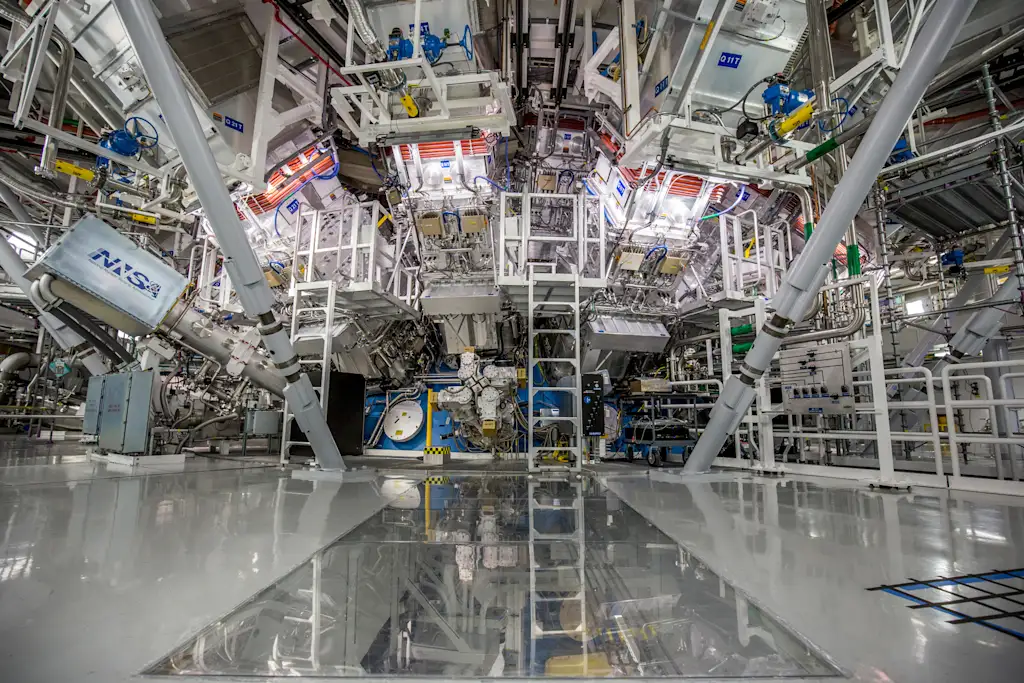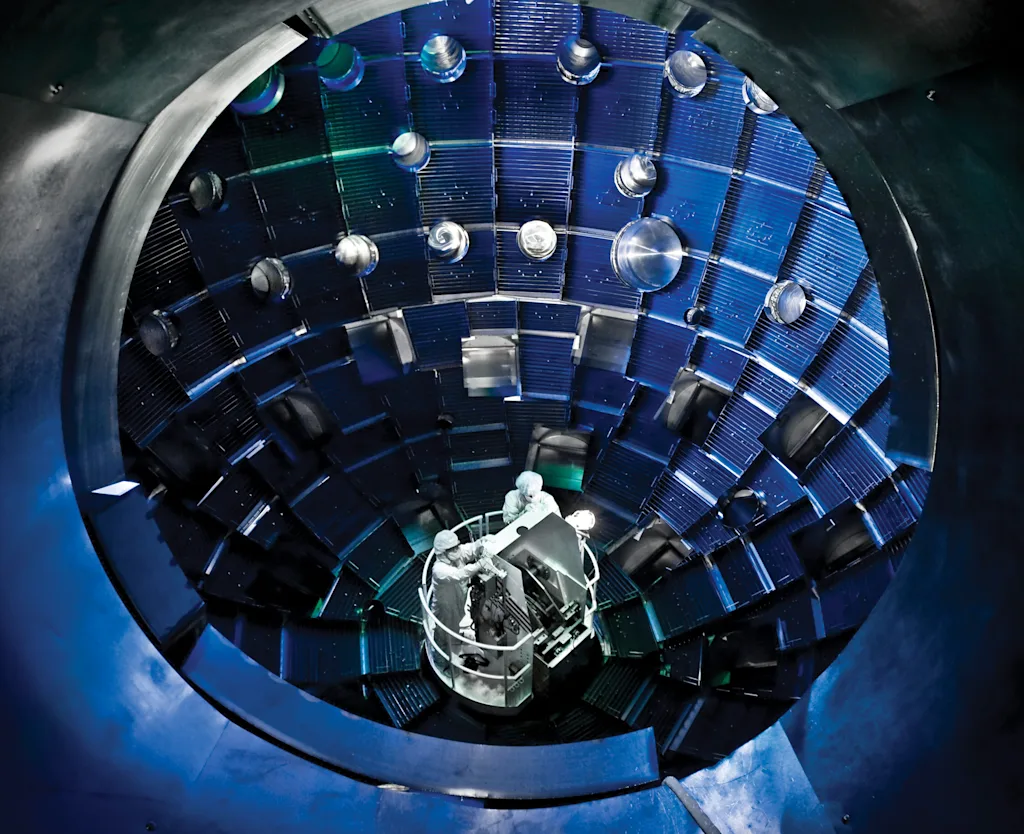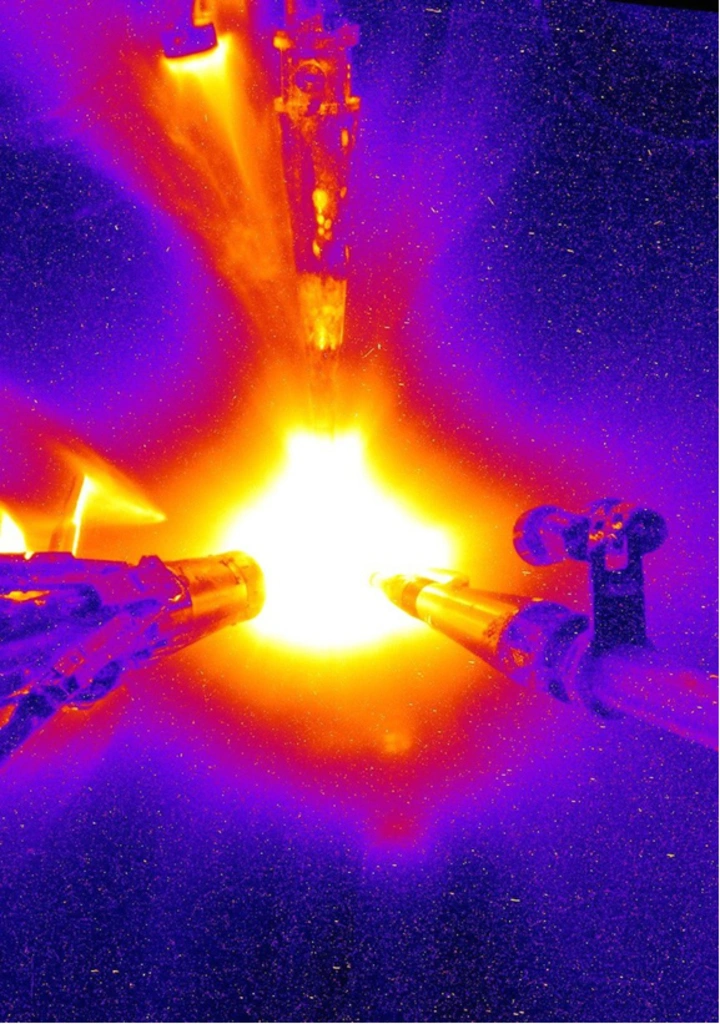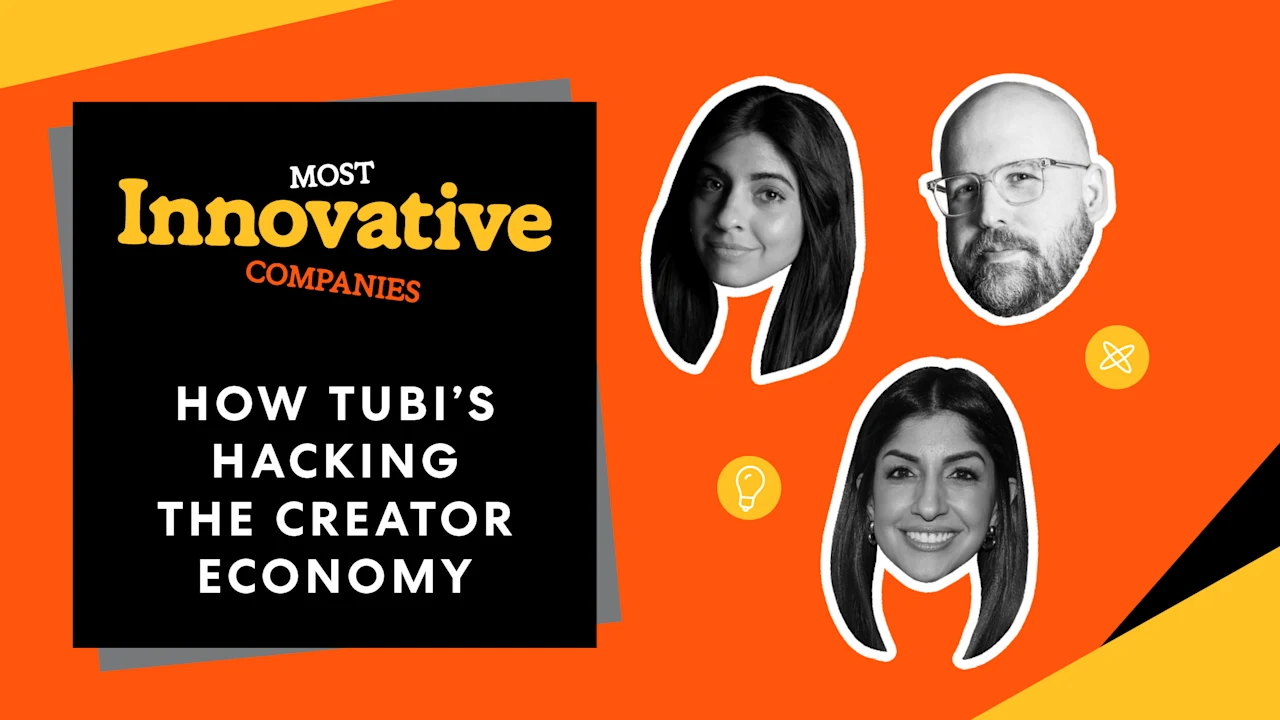A national lab made a nuclear fusion breakthrough. A new startup wants to make it into a power plant

Three years ago, scientists at Lawrence Livermore National Laboratory had a scientific breakthrough: as they fired lasers at a tiny pellet of fuel, they achieved fusion “ignition” for the first time, a key step in making fusion—clean, safe, abundant nuclear power—possible.
Now, a new startup called Inertia is spinning off to commercialize the lab’s approach and aim for the end goal—affordable clean energy that could be available 24/7.
Andrea Kritcher, the fusion energy pioneer behind the work at Livermore Labs, is founding the company along with Mike Dunne, a Stanford professor focused on fusion power plant design, and tech entrepreneur Jeff Lawson.
Lawson previously cofounded Twilio, a cloud communications platform, and grew it to a company with $4 billion a year in revenue, but left last year after pressure from activist investors. As he considered starting something new, he knew that he no longer wanted to work on software. (In a very different side project, he also bought The Onion and brought back its print edition.) Then he happened to meet Kritcher, and saw the opportunity to work on something transformative.
“There are a lot of startups out there pursuing fusion with a number of different methods,” Lawson says. “But none of them were really basing their work on Livermore and just taking the most direct possible path, from what has now been working at Livermore to a working power plant design.”

The lab’s initial breakthrough in 2022 was an early but historic step. In the experiment, researchers pointed 192 powerful lasers at a can roughly the size of a pencil eraser that contained a tiny capsule made of fusion fuel. The laser beams entered the end of the can and created a 3 million-degree oven, heating up the pellet and exploding it. “You get to these extreme starlight conditions—miniature stars inside of the can for a brief second in time,” Kritcher says.
The energy output from fusion reactions was larger than the energy input from the lasers. That’s the definition of ignition—and the point of the experiment and others that followed it at the lab. But the lasers still used an enormous amount of grid power. The next step is showing that it’s possible for the system to produce more energy.

That should be feasible. “The lasers are inefficient—based on very old technology,” says Kritcher. The lasers were also much smaller than they would need to be in a power plant. The experiment “was never meant to generate more energy than we pull from the wall,” she says.
Now, the team will adapt modern, much more powerful laser tech. “Number one, we have to build the world’s most energetic laser—a giant laser that is far more energetic and far more powerful than what they have at [the national lab], but also is actually physically much smaller,” Lawson says. The technical risk is low, he argues, and the challenge is more about ramping up manufacturing of parts that are already possible to make.

The tiny fuel “targets” in the system also need to be manufactured. The prototypes have been proven, Lawson says, and will now need to be mass produced in factories. The final step will be building a power plant.
The startup aims to have early design proofs for the target and lasers in 18 months. In three to four years, it expects to have scaled-down versions of the assembly line for both key parts. They believe that a working plant could be possible in around 10 years, and a fully scaled-up plant—producing 1.5 gigawatts of power, enough for a medium-sized city—could be possible in 12 years.
Other companies are taking different approaches. Commonwealth Fusion Systems, for example, which recently signed a deal with Google to provide future power to data centers and has raised nearly $3 billion to date, uses powerful magnets. But Inertia has the advantage of proof of ignition in the lab.
“Every approach to fusion has two things they primarily have to do,” Lawson says. “Number one, they have to build some really big, powerful driver to impart all this energy on the fuel. For CFS, it’s a magnet. For us, it’s a laser. The second thing they have to do is get the plasma physics of ignition to work, meaning the plasma actually does what you want it to do, remains confined. And when you reach these temperatures and pressures that are so extreme that you get fusion, you’re able to control it. Those are two very hard problems. The benefit of working from what Livermore has accomplished is the second one is now proven. That’s really, really valuable. That’s the unbounded basic science problem, and that’s the one that the US government has spent billions of dollars and 60 years to prove.”
In a new agreement, Kritcher will continue working for the national lab while the startup grows in a nearby facility. The company has licensed nearly 200 patents from the lab related to reaching fusion ignition.

“This is the first of a kind of agreement to allow a national lab employee to also be an entrepreneur in their area of expertise,” says Lawson. “The labs have been around since basically post-war, and there’s been probably hundreds of thousands of employees, and this is the first time it’s ever happened.” It’s possible because of the CHIPS Act, which encourages national labs to let employees pursue this type of public-private partnership.
Though the lab continues to do related scientific research, its purpose was never to build a commercial power plant. The startup could make that possible. It will also speed up research that was already underway; in the national lab, for example, it was only possible to run experiments a few times a year to optimize the energy output. Being able to quickly iterate through design changes “will be a game changer,” Kritcher says. The startup also plans to use AI to help dramatically speed up the design process.
The timeline is obviously very different from a software company. “For the next decade, the company is not going to be one where the story is told of revenue,” Lawson says. “It’s going to be told in terms of engineering, progress, and retirement of risks that stand between us and energy going on the grid. So you have a different set of milestones and a different way of measuring your progress.”
The stakes are also higher. “This is the holy grail of energy,” he says. “We’ve known that for 75 years. The only question has always been, is it possible? The question’s never been, is this a good form of energy? Everyone knows it is. The only question has been: Are we able to build the technology? And I think that we are very close.”
What's Your Reaction?
 Like
0
Like
0
 Dislike
0
Dislike
0
 Love
0
Love
0
 Funny
0
Funny
0
 Angry
0
Angry
0
 Sad
0
Sad
0
 Wow
0
Wow
0































































































